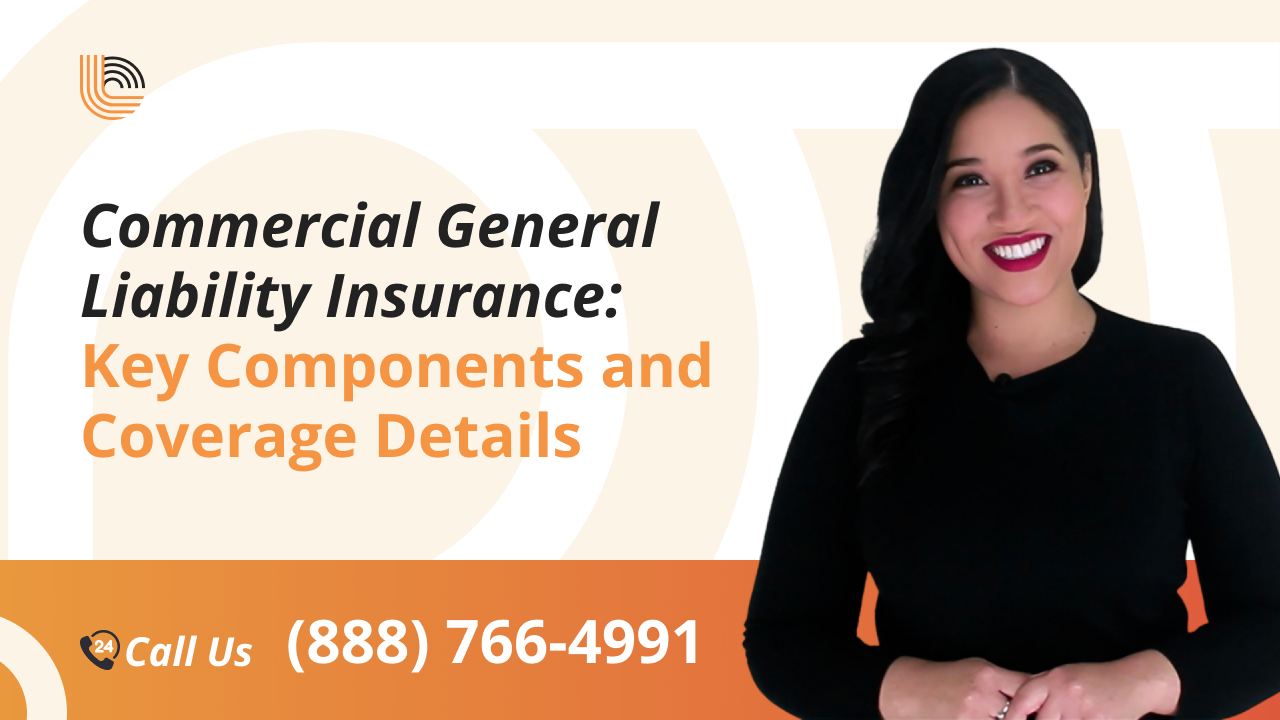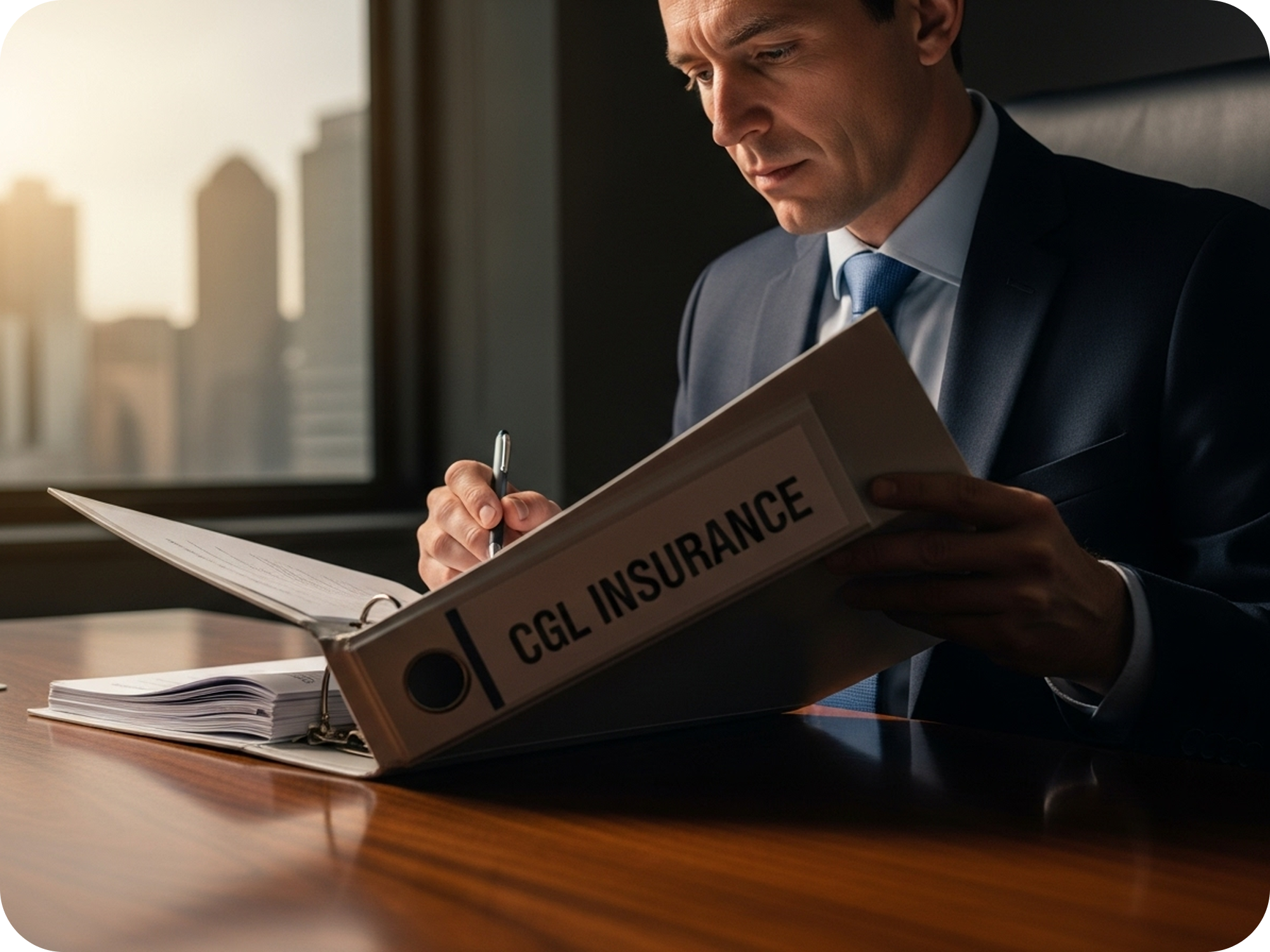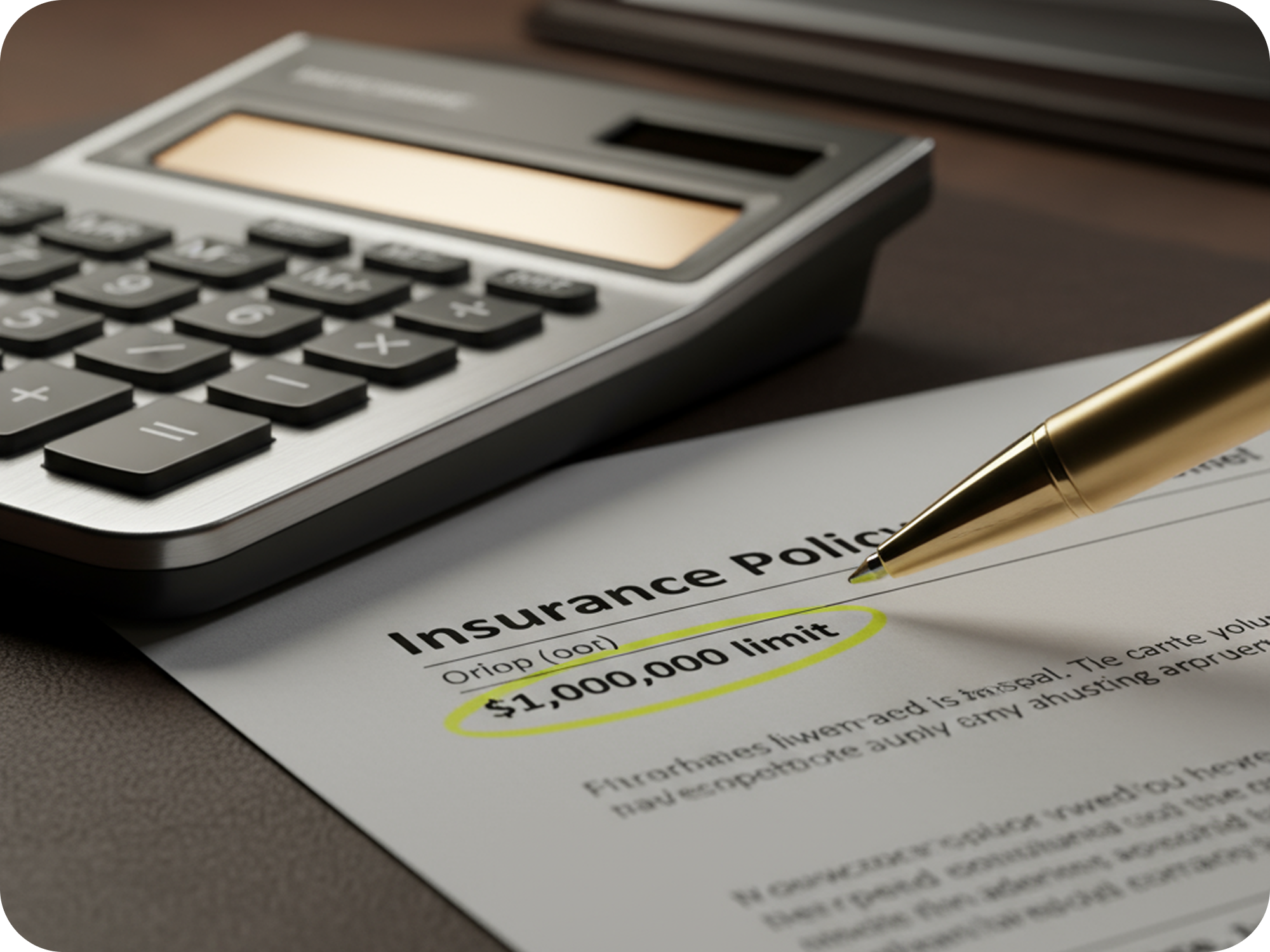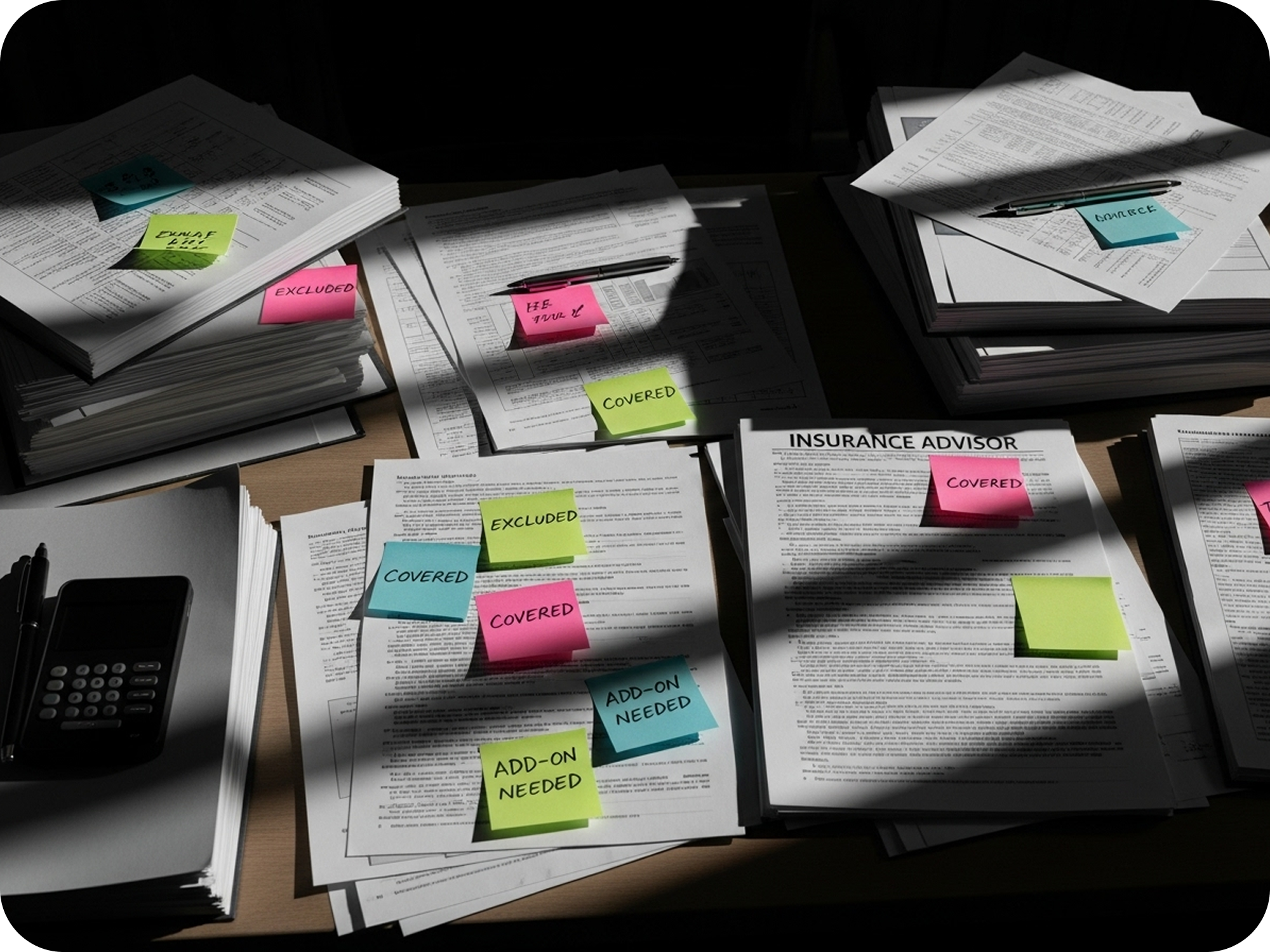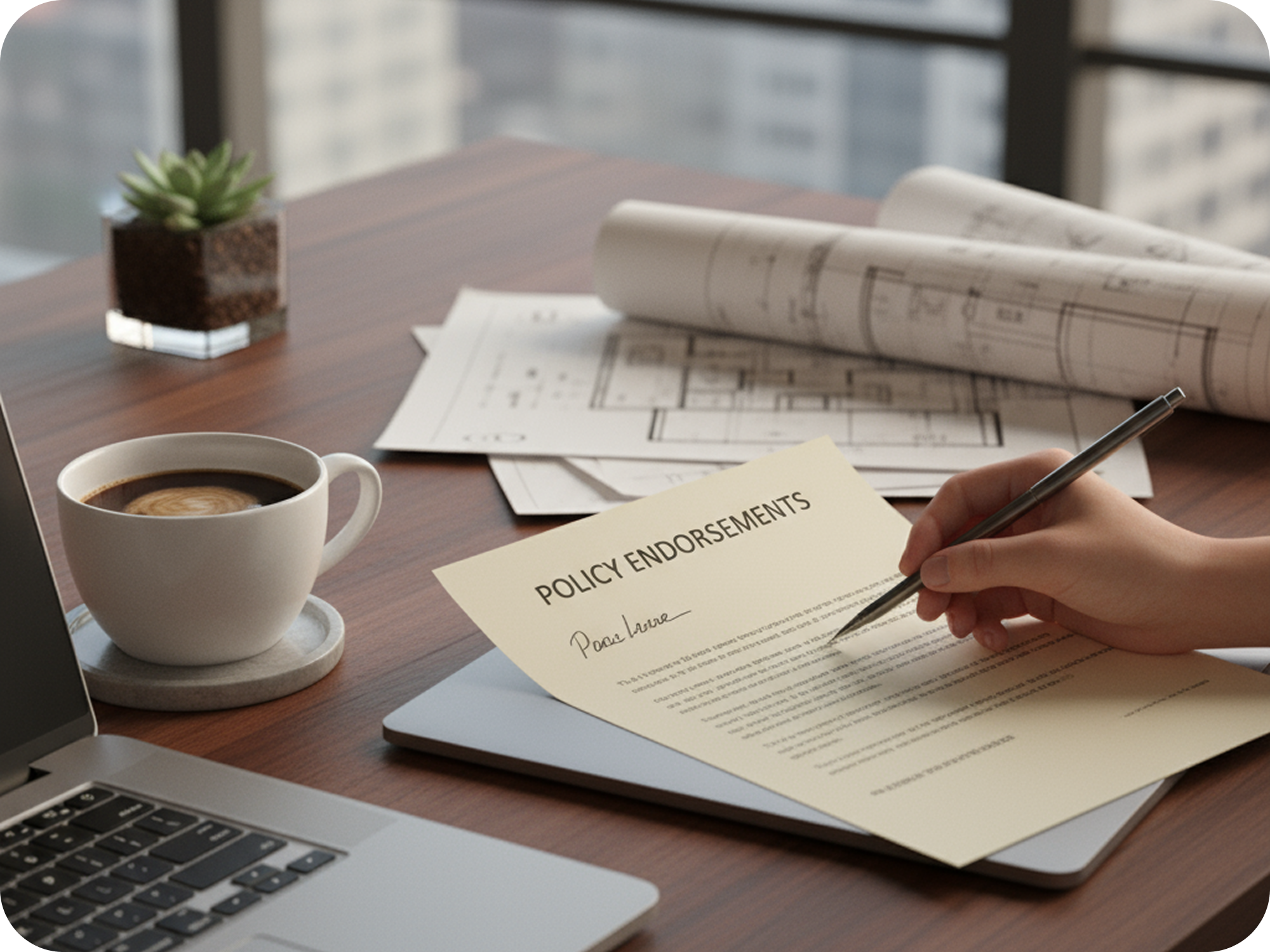Commercial General Liability Insurance Valuable Insights
- Commercial general liability insurance is one of the most critical business insurance policies, shielding businesses from basic third-party claims involving bodily injury, property damage, personal injury, and advertising injury. This helps protect both assets and reputation.
- Bodily injury and property damage coverages are foundational, providing coverage for medical expenses and property repairs. It’s important for businesses to choose appropriate limits on coverage to safeguard against possible liabilities.
- Personal and advertising injury coverages concern non-physical harm, like defamation or copyright infringement, so they’re important for businesses doing communications, media, or promotional work.
- Medical payments coverage offers quick funds for medical bills, regardless of liability, which can go a long way toward preserving your business relationships after accidents.
- Businesses should examine policy types, occurrence versus claims-made, and know the exclusions and coverage limits. A common baseline is one million US dollars to be fully protected and avoid unpleasant surprises.
- When seeking coverage, work with insurance experts to tailor your general liability policies. This allows you to account for unique risks inherent to your business and your industry-specific needs.
A policy provides fundamental coverage for claims arising from bodily injuries, property damage, or personal injuries related to business work. Most companies carry this policy to protect against legal expenses and third-party claims.
It frequently pays for legal fees, court awards, and medical expenses. To discover what isn’t covered and what is, firms have to read the fine print. The following illustrates the key coverages of this policy.
What is Commercial General Liability Insurance?
Commercial general liability insurance is arguably the most critical coverage for any business. It provides coverage for the general risks associated with normal business operations. This insurance protects businesses against claims of bodily injury, property damage, personal and advertising injury, and medical payments.
It is an important shield for business property and image. Most clients and partners will ask for evidence of this insurance before signing on. While not required by law in most jurisdictions, it is generally considered prudent to limit your financial risk and meet legal or contractual obligations.
1. Bodily Injury
Bodily injury covers a business if someone gets physically hurt because of its operations, products, or on its premises. This can include paying for medical treatment and legal fees if the injured person files a lawsuit. For instance, if a customer falls on a wet floor inside a store and breaks his or her arm, this coverage would help cover hospital bills and any related court costs.
Whether it’s falling debris, an error by an employee, or a slippery step, these situations can result in significant liability claims. Even a small accident has the potential to lead to exorbitant medical bills or legal settlements. Without adequate business insurance, companies could struggle with the financial repercussions.
Choosing the right business liability insurance policy limits is essential to ensure all potential injury claims are adequately addressed, especially for businesses with significant public interaction.
2. Property Damage
Property damage addresses claims stemming from damage to someone else’s property while conducting business. It contributes to the repair or replacement costs, like if an employee cracks a client’s window or paints a customer’s floor by accident during a job.
One small mistake, like dropping equipment on a client’s computer, can result in expensive claims. Insufficient property damage coverage can sap a business’ financial resources, particularly if the damage is costly.
Checking the policy’s coverage limits is crucial to make sure the business isn’t exposed to significant claims.
3. Personal Injury
Personal injury here refers to non-physical harm, for instance, allegations of libel, slander, or breach of privacy. This coverage assists if a business is sued for statements or actions that harm someone’s reputation.
For example, a company sued for false statements about a rival could count on this coverage for defense and settlement. Personal injury claims can disrupt business operations and cause financial distress.
Personal injury coverage in a general liability policy protects cash flow and business standing.
4. Advertising Injury
Advertising injury includes claims related to business promotions, including things like copyright infringement, misappropriation, or false advertising. If a business unknowingly prints another company’s logo on an ad, this coverage can help cover legal fees.
This coverage is crucial for businesses that do any kind of advertising or public outreach. Without it, just one claim could devastate you, particularly in brand-conscious markets.
5. Medical Payments
Medical payments coverage covers medical payments if anyone is injured as a result of the business’s operations, regardless of whether the business is liable or not. It pays for quick treatment of small injuries, such as a customer who falls in a store, which prevents larger lawsuits.
It can boost customer confidence by demonstrating that your business values safety and accountability. Typical applications are covering minor injuries from slips and falls or light accidents on business property.
Beyond the Basics
Robust commercial GL insurance is more than just a mop for slip-and-falls; it serves as a crucial part of a business insurance strategy. Advanced coverages extend protection beyond the basics, with CGL policies generally protecting businesses from claims related to bodily injury or property damage during ordinary business activities. However, these policies do not cover damage to the policyholder’s own property.
When businesses require additional liability coverage, umbrella insurance can bridge the gap, providing liability coverage above GL, auto liability, and employer’s liability policies. For industries like construction, healthcare, or manufacturing, the unique dangers demand tailor-made endorsements or extra coverage to genuinely be shielded, ensuring adequate coverage against specific risks.
Understanding the spectrum of commercial liability insurance options and aligning them with the business’s specific risk profile is the key to achieving rock-solid, customized coverage.
Occurrence vs. Claims-Made
Commercial liability policies come in two varieties: occurrence and claims made. An occurrence policy covers claims arising from events that take place during the policy period, regardless of when the claim is ultimately made. For instance, if a customer slips on a wet floor in a cafe in 2022 but sues two years later, the occurrence policy from 2022 answers so long as the accident happened in that coverage window.
A claims-made policy will only cover claims made during the policy period. If a business changes carriers or lapses coverage, previous claims may not be covered. That makes additional liability coverage critical for claims-made policies, particularly in sectors with long-tail risks, such as professional services or environmental consulting.
The purpose of selecting the appropriate policy type is to align with the business’s risk profile and operational realities. Companies with risks that might not surface for months or years tend to prefer occurrence policies for peace of mind. Others, wanting to control expenses and who can carefully watch claims, may choose claims-made.
The difference is important in defining coverage, how claims will be adjusted, and which policy will respond to liability claims effectively.
Products-Completed Operations
If you make, sell, or install products, you need products-completed operations coverage. This coverage kicks in when a completed product or completed service causes bodily injury or property damage after the work is done. For example, if a defective company-made appliance starts a fire months after it has been purchased, products-completed operations insurance would help cover claims and legal fees.
Reasonable boundaries exist because product claims are a serious liability. Food, electronics, construction, and auto parts manufacturers all need good coverage there. Without adequate products completed operations coverage, one claim could put business survival in jeopardy.
The $1 Million Question
A $1 million policy is the most popular option amongst numerous businesses globally. It’s not arbitrary, it’s a baseline that suits a lot of different kinds of risk and contracting requirements. For the vast majority of small and mid-sized businesses, a $1 million policy covers third-party claims of bodily injury, property damage, and related legal fees up to that amount.
The $1 million limit is typically per occurrence, so if one accident happens, the insurer will pay up to $1 million for that. Annual aggregate limits, usually $2 million for a $1 million policy, limit the total amount paid for all claims during the policy period, which is typically one year.
The $1 million limit is significant as it can protect a business from the brunt of sudden, expensive claims. Think slip and fall on retail store premises or product defect resulting in property damage. Very often, legal defense, settlements, and medical costs can climb quickly.
For these cases, a $1 million cap is typically sufficient to absorb the majority of typical claims, maintaining the business’ equilibrium and shielding its resources from unforeseen depletion. This makes it a clever base for the majority of businesses, particularly ones of moderate risk and no prior history of mega-losses.
Selecting a $1 million policy is smart from a cost perspective. The yearly premium typically runs a few hundred to a thousand or so dollars, though this can vary based on business type, claims history and location. For instance, a no claims business will pay much less than one with previous suits.
In certain industries like construction, manufacturing or multi-site operations, the $1 million cap can come up short. If a business is working on million-dollar projects or serving clients who need larger caps in their contracts, a standard plan won’t suffice.
If a claim exceeds the $1 million per-occurrence limit, the company has to pay the difference out of their own pocket. This risk can be massive, particularly with complicated lawsuits, serious injuries, or property damage over $1 million.
The following table shows what happens if a claim goes beyond the policy limit:
|
Claim Amount (USD) |
Insurance Pays (Up to Limit) |
Business Pays (Excess) |
|---|---|---|
|
$800,000 |
$800,000 |
$0 |
|
$1,000,000 |
$1,000,000 |
$0 |
|
$1,200,000 |
$1,000,000 |
$200,000 |
|
$2,500,000 |
$1,000,000 |
$1,500,000 |
Such large gaps can jeopardize the business, deplete reserves, or even shut it down. For firms with higher risk or contract requirements, determine whether higher limits or additional policies are appropriate.
Umbrella and excess liability insurance can provide additional coverage over the primary policy and are recommended for larger risks.
Navigating Policy Exclusions
Commercial general liability (CGL) insurance exclusions determine what is and isn’t covered under a policy. These exclusions are not fine print they determine the true limits of your company’s business coverage. If a business owner isn’t aware of these limits, they may be shocked when a claim is denied. A denied claim is often a shock, particularly when it connects to a policy exclusion. Knowing these exclusions is critical for any risk or insurance decision maker, especially when considering their CGL coverage.
|
Exclusion Type |
What It Means |
Example Use Case |
|---|---|---|
|
Contractual Liability |
No cover for liability assumed by contract unless it’s specifically listed |
Business signs a lease agreeing to cover all injuries |
|
Employment-Related Practices |
No cover for claims like harassment, discrimination, or wrongful termination |
Employee files a claim for workplace discrimination |
|
Pollution and Environmental |
No cover for most pollution-related damages |
A spill causes soil contamination on client’s property |
|
Liquor Liability |
No cover for alcohol-related incidents unless added by endorsement |
Bar is sued after a patron causes harm when intoxicated |
|
Professional Services |
No cover for errors in professional advice or services |
Consultant gives flawed advice, client loses money |
|
Product Recall |
No cover for costs to recall defective products |
Manufacturer must recall toys due to safety issue |
|
Damage to Owned Property |
No cover for damage to property owned or rented by the business |
Water leak damages company’s own storage facility |
|
Workers’ Compensation |
No cover for injuries to employees |
Employee gets hurt on job, must file under separate plan |
It is critical to go over every policy at purchase, particularly at renewal, to ensure all business risks are still being covered and all exclusions are clear. Exclusions vary from year to year and with business changes, which can affect the adequacy of general liability insurance requirements.
Consider a business that begins serving liquor at an event and is therefore suddenly hit with a liquor liability exclusion, which isn’t included in basic CGL but could be handled by a standalone liquor liability policy. The same applies for pollution; a lot of CGL policies exclude pollution, so a manufacturer or contractor might require a separate environmental or pollution liability policy to ensure they have the necessary protections.
A lot of claims get denied when an exclusion kicks in, leaving businesses vulnerable to significant expenses. For instance, if a CGL policy excludes contractual liability, any claim stemming from a contract provision, such as a landlord requiring a tenant business to foot the bill for all injuries, won’t get paid by the licensed insurer.
Employment-related claims, like discrimination or wrongful termination, typically need EPLI, a totally different type of insurance. These gaps mean that business owners need to reconcile exclusions with the actual risks they encounter. Without this, businesses can believe that they are covered, but in reality, they are not.
Policy exclusions assist insurers in curbing “double dipping,” where two policies could be activated by the same occurrence. This can complicate claims handling and policy management, particularly if policies overlap or there are fuzzy lines between coverages.
Many businesses will require assistance, occasionally from their legal or insurance counsel, to determine which policy, if any, governs a particular event and to ensure they have adequate coverage for their specific business needs.
High-Risk General Liability
High-risk general liability is essential for companies that stand a higher chance of being sued due to third-party injuries or property damage. These policies help protect companies from large legal expenses if someone is injured or property is damaged as a result of their work. It’s most important for businesses in industries where hazard is part of the position imagine construction sites, massive manufacturing plants, or trucking.
For these cohorts, a lawsuit isn’t uncommon. The risks are baked into day-to-day work, so the necessity for savvy coverage exceeds most other lines of business. High-risk companies frequently deal with heavy tools, machinery, or materials. Construction companies, for example, work with cranes, ladders, and power tools, increasing the potential for accidents that may injure workers or bystanders.
Manufacturing plants might use harsh chemicals or large machinery, so spills or injuries are more probable. In transport, drivers encounter road risks daily, so the risk of an accident is elevated. What unites these groups here is not just the implements, but the persistent peril. Small accidents can result in large claims for both medical expenses and property damage.
Insurers servicing these high-risk areas provide policies that extend beyond the essentials. They may include personal injury coverage, such as libel or slander, not just bodily injury. Other add-ons include contract brawls or leased space damage. They can cover legal fees, settlements, or court awards.
The cost of these policies is commensurate with the risk. A small low-risk business might pay between $300 and $600 a year for $1,000,000 in coverage, while a high-risk company might pay over $1,000. The price depends on many factors: the type of work, how many claims have been filed before, and even where the business is based. Urban firms tend to pay a bit more than rural ones because more people and assets mean more risk.
If a company has a history of claims, insurers consider it an indicator of future claims, which pushes up the price as well. So, prices and coverage vary widely from business to business. It is wise for any business to examine its risk profile with consideration. A great start is to check what work gets done, how often things go wrong, and if previous claims have been filed.
Companies have to consider where they operate and what policies or precautions are implemented. Armed with this transparency, a business can select a policy that suits not just to satisfy regulators, but to keep the company protected in the long run.
Customizing Your CGL Policy
Tailoring a CGL policy to what a business does is crucial for both scaling and security. A typical CGL policy protects general risks, but every business has its own vulnerabilities. A tech firm with remote teams isn’t exposed to the same risks as a food maker with on-prem workers. A cookie-cutter policy isn’t going to cover every nuance. Customizing allows a business to fill gaps and not pay for things that are irrelevant to its work.
One method to form a CGL plan is by way of endorsements and extra coverage. Endorsements are alterations to or supplements of the base coverage. For instance, a business holding public events might desire a ‘contractual liability’ endorsement. A builder who has work at multiple job sites may include ‘completed operations’ coverage. Some companies require coverage for products that go global, so they request ‘worldwide coverage’ endorsements. Companies with tons of digital work can tack on “cyber liability” to protect against information risks.
Endorsements can carve out unwanted risks, which reduces expense and keeps the plan targeted.
Partnering with someone who understands the insurance landscape can really help. Insurance pros are trained to identify risks that are all too easy to overlook. They query work habits, employees, previous claims and future intentions. They understand policy fine print and can interpret what each clause means.
With their guidance, companies can select covers that suit their exposures, not just shop for a cookie cutter. It saves time and money and helps with claims if something goes awry.
There are few things that determine how a CGL policy gets constructed. Industry risk is a major factor. For example, a factory with heavy machines is at greater risk for injury claims than a quiet office. How a company runs day-to-day matters. A shop open to the public encounters slip-and-fall claims, whereas a design studio may be concerned about copyright.
Factors like the size of your team, where you work, and if your business sells or ships internationally all play a role. Laws in each location count, as some locations require coverage for specific risks by law. Historical claims and expansion plans are important as well, as they indicate where new exposures may arise.
Conclusion
To protect your business, a good commercial general liability policy goes a long way. Defined limits and cover add tangible value. A policy ends the worry of large claims or lawsuits. A million-dollar limit is a solid base for many shops and start-ups. High risk gigs might require additional attention, so chat with a broker that specializes in your industry. Policy gaps trip up many, so read each line carefully. Add cover or switch terms as your work or risks change. The right policy saves money and hassle. Are you looking to make savvy selections? Contact a broker, or browse more guides and real stories. Consult and construct your business’s own protector.
Frequently Asked Questions
What does a Commercial General Liability Insurance policy cover?
It often referrs to as CGL coverage, protects against claims for bodily injury or property damage that occur on your business premises or as a result of your operations.
Is Commercial General Liability Insurance required by law?
While most countries don’t require business insurance, many clients or landlords will request general liability insurance before engaging with your company. It’s a must-have for credibility as well as peace of mind.
What is the meaning of the $1 million coverage limit?
A $1 million coverage limit in your business insurance means the insurer will pay up to $1 million for a single claim or incident, assisting your business in avoiding significant financial damage.
What are common exclusions in a CGL policy?
Typical exclusions in business insurance policies include professional mistakes, deliberate harm, worker’s compensation, and auto accidents. Review your general liability coverage policy to see what isn’t covered!
Who needs high-risk general liability coverage?
High risk businesses, such as construction or manufacturing, often require specialized business insurance products for increased liabilities and adequate coverage.
Can you customize your policy?
Yes, you can customize your business insurance policy by including endorsements or increasing limits to suit your specific business exposures.
How much does cost?
It varies based on your business size, industry, location, and coverage limit; shopping for a general liability insurance quote could help you find the best value.

